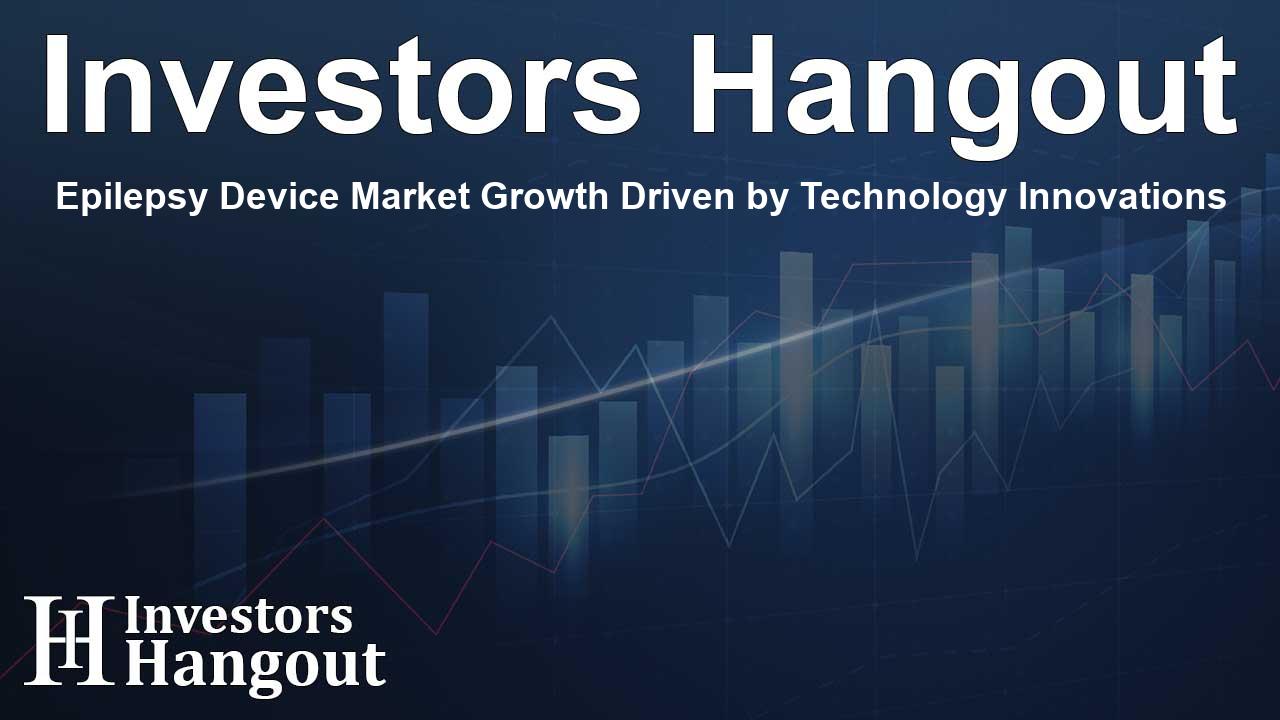Epilepsy Device Market Growth Driven by Technology Innovations

Overview of the Epilepsy Device Market
The epilepsy device market is on a promising trajectory, experiencing substantial growth. Currently valued at approximately USD 0.75 billion, it is projected to reach USD 1.18 billion, thanks to a compound annual growth rate (CAGR) of 5.15% between 2024 and 2032. The increasing prevalence of epilepsy, with millions affected globally, plays a crucial role in this market expansion.
Key Factors Driving Market Growth
Several factors are propelling the epilepsy device market forward. Firstly, advancements in technology have led to innovative solutions such as wearable seizure monitors and neurostimulation devices. These devices enhance early detection of seizures and improve patient management significantly.
The Rise of Non-Invasive Treatments
Patients are increasingly favoring non-invasive options like responsive neurostimulation (RNS) and transcranial magnetic stimulation (TMS). These treatments not only help decrease the frequency of seizures but also enhance the overall quality of life for individuals, making them more attractive compared to traditional drug therapies.
Role of AI in Epilepsy Care
Artificial Intelligence (AI) is revolutionizing the field of epilepsy by offering personalized care options. AI models are being utilized for superior EEG classification and seizure predictions, ensuring tailored treatment approaches for patients worldwide.
Major Players in the Epilepsy Device Market
The market is heavily influenced by key industry players who contribute significantly to its growth. Notable companies include Medtronic plc, Boston Scientific Corporation, and Abbott Laboratories. Their commitment to research and development has led to groundbreaking advancements in epilepsy treatment devices.
Segment Analysis by End User
Hospitals currently dominate the epilepsy device market, holding around 69% of the revenue share. This dominance is attributed to their comprehensive care capabilities and established patient referral systems. However, neurology centers are projected to grow at the fastest rate due to increasing demand for specialized services.
End User Trends
As we look into the future, neurology centers are expected to experience significant growth, showcasing a CAGR of 6.56%. These centers specialize in epilepsy care and are gaining recognition for providing focused and effective treatments tailored to patient needs.
Product Type Trends in the Market
The conventional devices segment has been leading the market, accounting for 46% of the total revenue in recent years. However, wearable devices are anticipated to drive future growth with a projected CAGR of 6.06%. The demand for convenience, real-time monitoring, and user-friendliness is pushing this segment forward.
Technological Advancements
In terms of technology, deep brain stimulation (DBS) emerged as the leading method due to its effectiveness in dealing with drug-resistant epilepsy. Meanwhile, responsive neurostimulation technology is gaining attention for its personalized approach, which could lead to an increase in market share in the coming years.
Regional Market Insights
North America continues to lead the epilepsy device market with a substantial share of 44%, driven by advanced healthcare systems and technology adoption. On the other hand, the Asia Pacific region is showing rapid growth potential, bolstered by increasing healthcare investments and raising awareness surrounding epilepsy treatment.
Recent Developments in Epilepsy Device Technology
Recent innovations highlight the dynamic nature of the epilepsy device market. For example, Medtronic's Percept RC Deep Brain Stimulation system received FDA approval, marking a significant advancement in treatment options. Similarly, LivaNova's upcoming presentation at a notable conference focuses on the effectiveness of their VNS Therapy, underscoring the ongoing commitment to enhancing patient care.
Conclusion
The epilepsy device market is poised for robust growth driven by technological advancements, increasing demand for non-invasive treatment options, and a growing patient population worldwide. As industry leaders continue to innovate, patients will benefit from improved, personalized treatment options that enhance their quality of life.
Frequently Asked Questions
What is the expected growth rate of the epilepsy device market?
The epilepsy device market is projected to grow at a CAGR of 5.15% from 2024 to 2032.
Which segments are driving the market's growth?
The segments driving growth include wearable devices and non-invasive treatment options like RNS and TMS.
Who are the key players in the epilepsy device market?
Key players include Medtronic, Boston Scientific, and Abbott Laboratories, among others.
What is the market size projected for 2032?
The market size is expected to reach USD 1.18 billion by 2032.
Which region leads the epilepsy device market?
North America currently leads the market, accounting for approximately 44% of the total revenue share.
About The Author
Contact Dominic Sanders privately here. Or send an email with ATTN: Dominic Sanders as the subject to contact@investorshangout.com.
About Investors Hangout
Investors Hangout is a leading online stock forum for financial discussion and learning, offering a wide range of free tools and resources. It draws in traders of all levels, who exchange market knowledge, investigate trading tactics, and keep an eye on industry developments in real time. Featuring financial articles, stock message boards, quotes, charts, company profiles, and live news updates. Through cooperative learning and a wealth of informational resources, it helps users from novices creating their first portfolios to experts honing their techniques. Join Investors Hangout today: https://investorshangout.com/
The content of this article is based on factual, publicly available information and does not represent legal, financial, or investment advice. Investors Hangout does not offer financial advice, and the author is not a licensed financial advisor. Consult a qualified advisor before making any financial or investment decisions based on this article. This article should not be considered advice to purchase, sell, or hold any securities or other investments. If any of the material provided here is inaccurate, please contact us for corrections.
